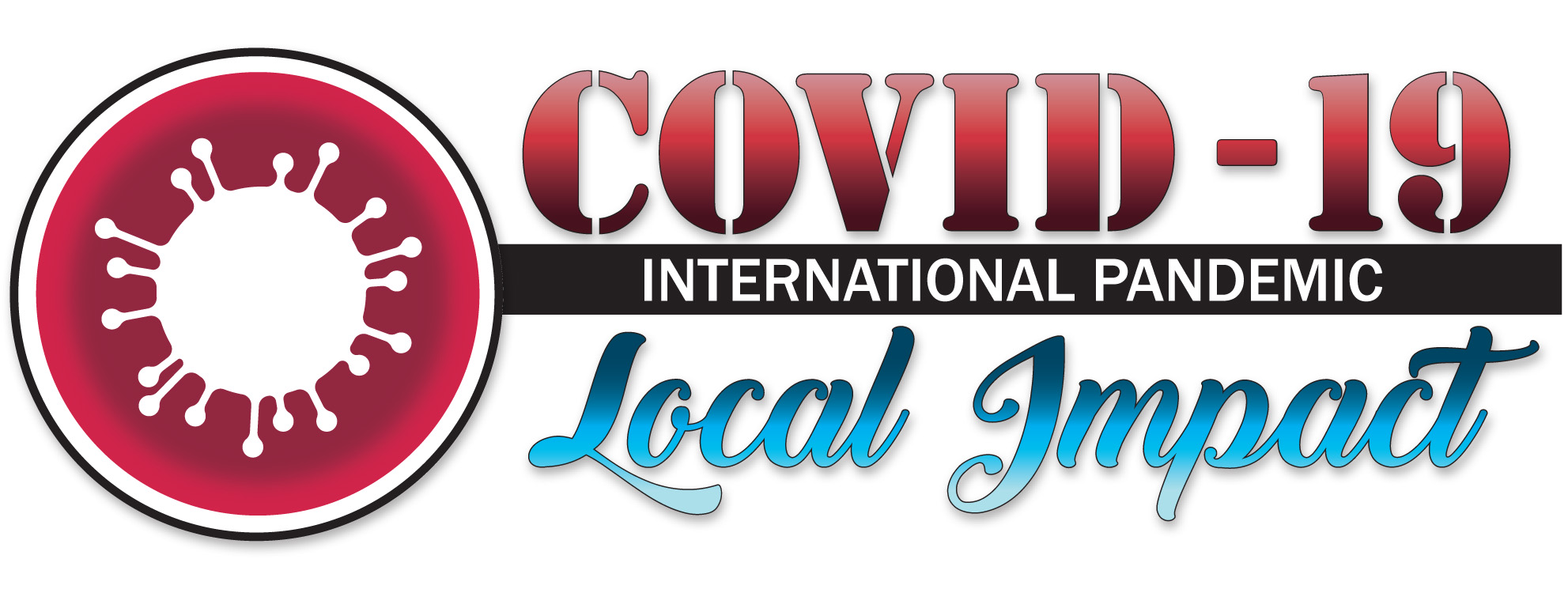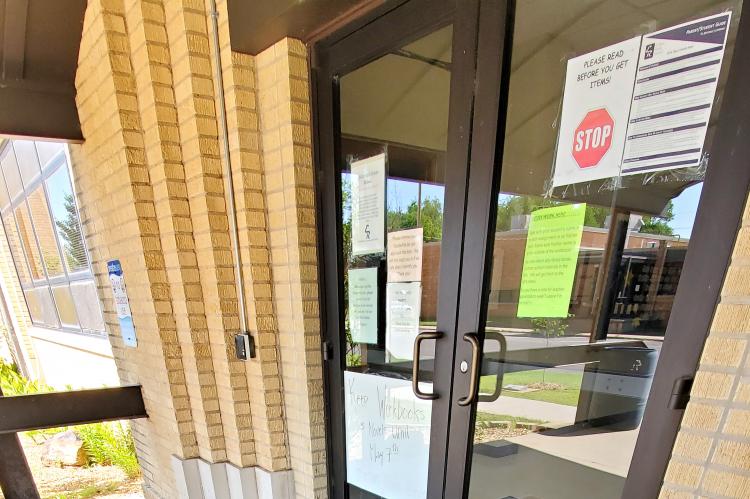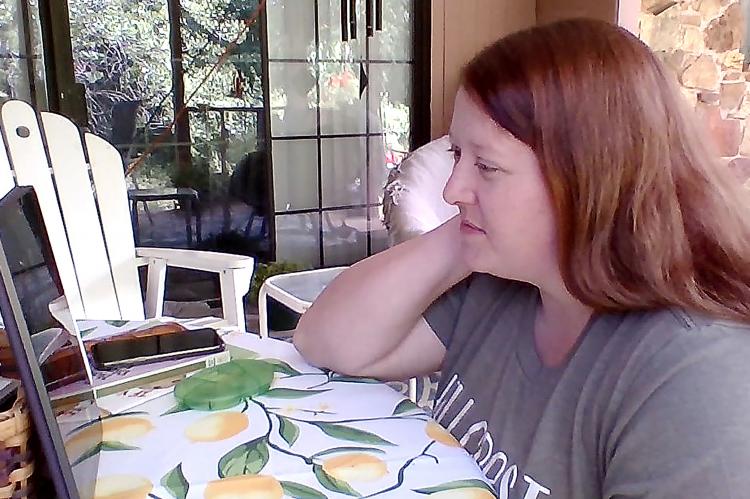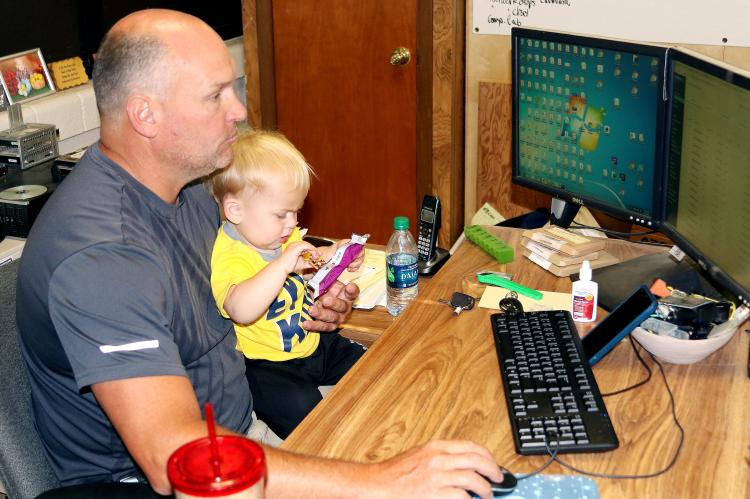Packets and computers
El Reno used blended delivery of coursework

This is the second installment in a series looking back at El Reno Public Schools efforts during the COVID-19 pandemic.
In the early stages of discussion on how to educate students during the COVID-19 pandemic, the Oklahoma State Department of Education put a freeze on grades as of March 18.
The move meant El Reno students could not slip below their grade in any class after that date. However, a student could raise their score in any coursework over the six-week distance learning period, which ended May 8 for El Reno.
This was done as an effort to increase student participation in coursework being done from home because of the COVID-19 lockout.
The move also meant school districts would have to implement and get state approval on a delivery method to get materials to students, which for El Reno was just over 3,000 pupils.
It also brought back to the spotlight the problem of the “digital divide” in our state and across the nation. The divide is the number of students who have ready access to computers and the Internet, and those who do not.
State Superintendent Joy Hofmeister said part of the state’s money from the federal stimulus package was going to be used to address the problem in Oklahoma.
She added that districts were going to have to address the divide on the local level to the best of their abilities and that the delivery methods would look different due to the level of technology within each district.
El Reno, with more than 45 percent of its students in homes without a computer device or Internet access, opted for a blended system where digital classes would be used as well as paper packets to be picked up and returned to the school sites by parents.
Elliott Robertson, Director of Technology, said the district looked into providing Internet access to those students without it in their homes. However, the cost proved to be too high.
The district estimated 1,410 students needed Internet access, and to get a hot spot for each student one night a week, which would be 20 percent, El Reno would need 285 devices.
Each hot spot costs $159.97 for a total of $45,591.45.
The service for those hot spots, said Robertson, would be $39.97 a month for a gig of filtered data or $11,391.45 a month. He added a full seven-hour day of learning would require four to six times the amount of data per unit.
“That’s a huge expense that the school just does not have the money for, so if there are other ways, you do it and that’s what we did.
“We talked about getting a few hot spots, but then you run into the problem of how do you hand those out, when do you get them back and if you only get one hot spot every five days, how much does that really help the student,” said Robertson.
Robertson said El Reno did turn up the district’s unlimited WiFi signal at most of the school sites to allow students to drive up and connect if needed, but it was rarely used.
“During a normal school day our 3 gigabyte trunk to the Internet averages about 1.8 gigabyte and just over 2.5 during testing. Now I’m seeing less than 120 megabytes.
“Since teachers are using their own Internet access and students are using what they have at home, our network is barely being used,” said Robertson.
Robertson said from his end of the distance learning plan, he would give the district an A grade.
“The principals figured out what they wanted to do and sent it down to the teachers. We just opened things up, allowed access and gave devices where it was needed. The principals did the work and then said, ‘Hey, we need you to make this happen.’
“At first there was a lot of students on and we could see them on their Google accounts and using them. Over the weeks, the packets seemed to be the way to go. They preferred the packets over the online learning,” said Robertson.
The packets, depending on the school site, were offered differently. Hillcrest Learning Center did the entire distance learning session in one packet handout. In addition to their course work, the pre-kindergarten and kindergarten students were given work in physical education, library and music.
The online tools were then used for enrichment purposes and to stay in touch between teachers and students, said Principal Lanae Goucher.
“All of our packets were hands-on, family-based material. We made 384 packets and we handed them out for three hours one night. Only 21 of those packets were not picked up and I delivered the rest to students’ porches,” said Goucher.
Hillcrest did not require the packets to be returned for grading. Goucher said she feels having students in school remains the best teaching method, but says there were some aspects of the electronic teaching she hopes to incorporate for the 2020-21 term.
“The good thing was that we were forced to use technology that we had not used before. For me I will use some of the technology next year and I know some of my teachers will be using certain programs and applications in their classrooms.
“But nothing will replace getting our students into a classroom and being face-to-face with a teacher,” said Goucher.
Lincoln Learning Center Principal Robin Holley was pleased with how her third- and fourth-grade teachers adjusted to the blended teaching method.
“I believe our teachers have done an amazing job adjusting to this new normal. They have gone above and beyond, but we would much rather go back to our old normal of teaching. We love our kids and want to see them in school with us,” said Holley.
Like Hillcrest, Lincoln did not require packet work to be returned. Holley added the participation level for the paper and pencil method dropped over the course of the lockout.
“I’m not a fan of packets. When we first went to distance learning, all the packets were being picked up, but as time went on we had more and more not picked up at all.
“I think parents and teachers did the best they knew to do during this time but again nothing beats children and teachers coming together to learn in the school building,” said Holley.
The district says it created more than 3,500 paper packets.



